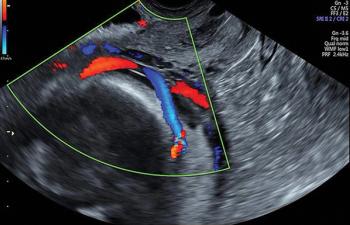
Identifying abnormal placentation is crucial for determining the correct management of at-risk pregnancies and minimizing morbidity and mortality of both mother and child.

Identifying abnormal placentation is crucial for determining the correct management of at-risk pregnancies and minimizing morbidity and mortality of both mother and child.

Fifty years after Roe and Title X, the right to reproductive freedom continues to come under fire.

Pioneers in uterine transplantation provide an update on an investigational procedure that holds promise for women with absolute uterine factor infertility.

Results of new research from American Journal and Obstetrics & Gynecology suggest that naltrexone may be an option for pregnant women who use opioids.

Results from a recently published study in Obstetrics & Gynecology suggest that fetal telecardiology may be a viable solution for mothers who live in remote areas.

These are Contemporary OB/GYN's selections for five of the most noteworthy obstetric-focused studies that were published in October 2019.

Recently published in Obstetrics & Gynecology, new research suggests that significant progress has been made in reducing antibiotic use without indication during vaginal delivery hospitalizations.

A new analysis of electronic health record (HER) data suggests that identifying and treating anemia in women who present for vaginal delivery may help lower risk of postpartum anemia.

A recent research letter appearing in JAMA explored why maternal gastric bypass surgery may reduce risk to major birth defects in infants.

Although women face many obstacles to first-trimester abortion, challenges to second-trimester abortion are even greater.

Although residency teaches doctors to deliver babies, how to deliver bad news must also be a part of the curriculum.

Ob/gyn, while late to the game, has the potential to climb the ranks as the specialty most instrumental to the use and development of AI.

In a first-of-its-kind study, Canadian researchers explored how antidepressants and duration of use affects gestational diabetes mellitus risk.

A recently published study investigated whether maternal red blood cell (RBC) lead exposure is associated with intergenerational overweight and or obesity (OWO).

From research on whether high-risk pregnancies are receiving the proper level of care to a 40-year study on hypertension in pregnancy, these are five of the most noteworthy obstetric-focused studies published in September 2019.

A cohort study of more than a half million individuals suggests that maternal anemia in early pregnancy may have a negative impact on a fetus’s neurodevelopment.

A recent study sought to estimate the degree to which women at high risk for developing severe maternal morbidity deliver at appropriate levels in maternal care centers.

The following eight topics should be discussed with patients in order to provide the best postpartum care.

Ob/gyns sometimes need to go beyond guidelines when making judgment calls, as is the case with whether to induce at 37 weeks for gestational hypertension.

New research explored whether risk of wrong-patient orders increased among multiple-birth infants compared with singleton-birth infants in the NICU.

Ranging from a comparison between hospital and home births to an update from the CDC on infant mortality, these are five of the most noteworthy obstetric-focused studies published in August 2019.

A recent study compared labor care processes and birth outcomes between births in medical centers with both midwives and physicians versus those receiving only physician care.

A recent study evaluated whether an institutional policy of universal perinatal depression screening would increase screening frequency and treatment after a positive test result.

While water fluoridation has great benefits for tooth decay prevention, research indicates that in pregnant women, fluoride crosses the placenta and accumulates in brain regions involved in learning and memory.

Ranging from the impact diet supplements have on heart health to whether cannabis use impacts a woman's risk for PTB, these are five of the most noteworthy studies published in July 2019.